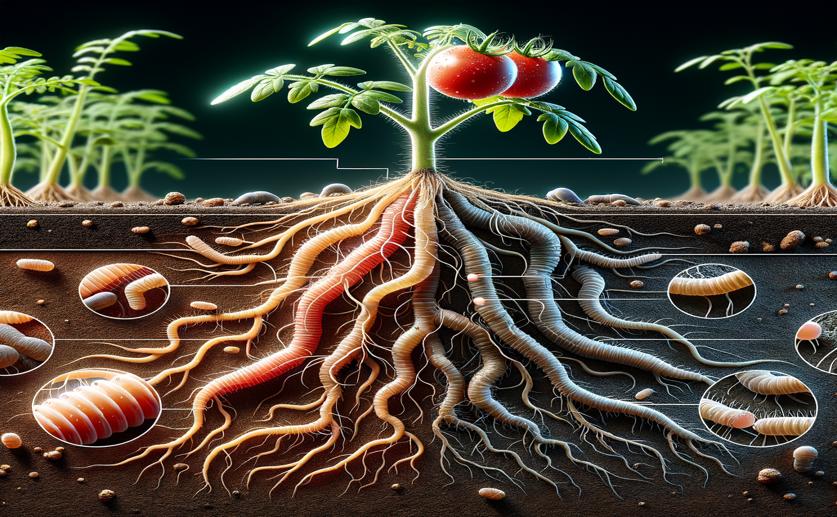
Genes in Tomato Roots Responding to Parasitism Under Different Light Conditions
Greg Howard
15th August, 2024

Image Source: Natural Science News, 2024
Key Findings
- The study from Warsaw University of Life Sciences - SGGW examined how tomato seedlings respond to high light intensity and nematode infection
- Tomato seedlings maintained efficient photosynthesis under high light and nematode stress, as shown by improved PSII quantum yield
- Roots, even without light exposure, showed significant molecular changes, indicating robust defense and antioxidant responses
- Combined stress of light and nematode infection induced more gene expression changes than either stress alone, highlighting the complexity of plant stress responses
References
Main Study
1) Identification of genes involved in the tomato root response to Globodera rostochiensis parasitism under varied light conditions.
Published 14th August, 2024
https://doi.org/10.1007/s13353-024-00897-6
Related Studies
2) Elucidating the Response of Crop Plants towards Individual, Combined and Sequentially Occurring Abiotic Stresses.
3) Identification of genes involved in the response of Arabidopsis to simultaneous biotic and abiotic stresses.
4) May the dark be with roots: a perspective on how root illumination may bias in vitro research on plant-environment interactions.



 13th August, 2024 | Greg Howard
13th August, 2024 | Greg Howard